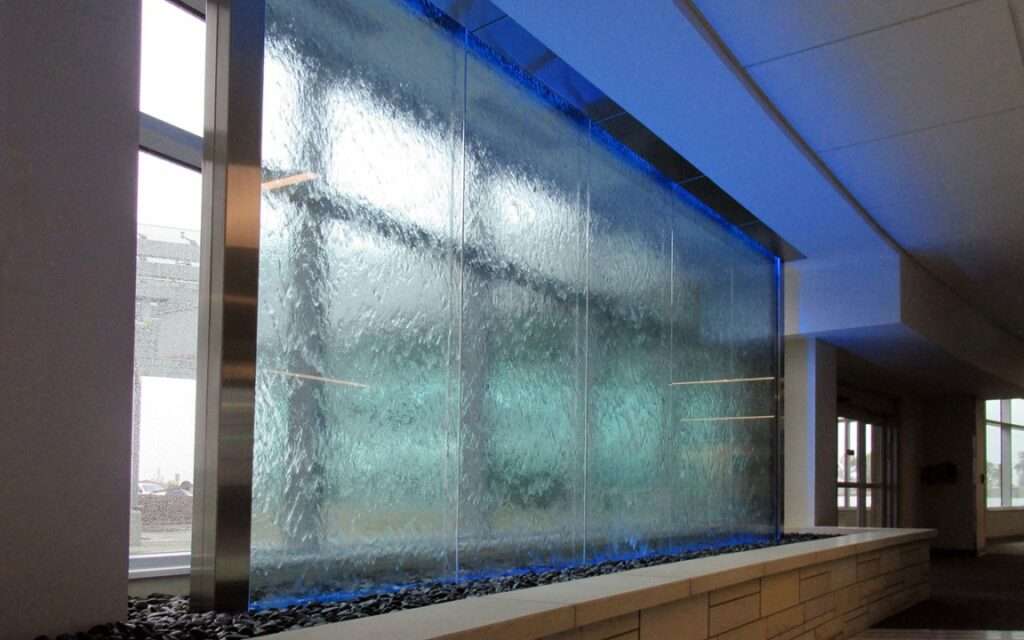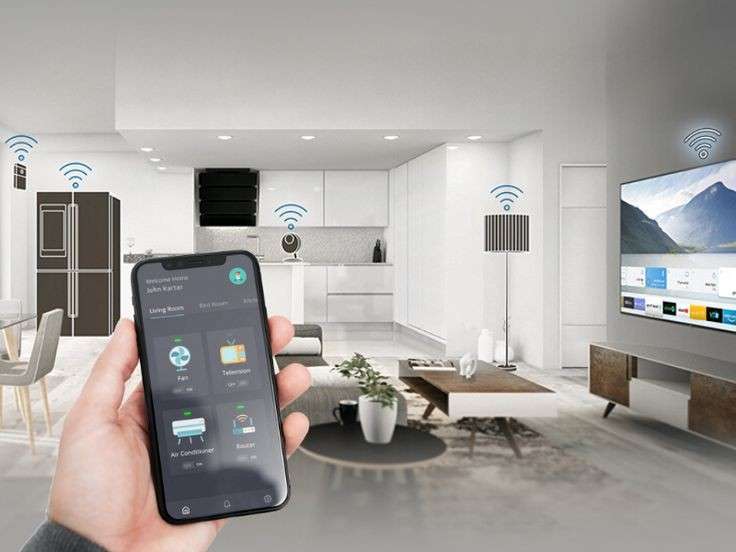Water has always been a symbol of tranquility, purity, and renewal. Its gentle flow can transform any environment, creating a calming atmosphere and a sense of serenity. In interior design, water features are more than just aesthetic elements—they bring both visual beauty and soothing sounds that can enhance the overall ambiance of a space.
At Scale & Structure, we understand the power of water in design. We use water features in our projects to foster relaxation, bring natural elements indoors, and create spaces that feel both luxurious and harmonious. In this blog, we’ll explore the different types of water features that can be incorporated into interior spaces and how they contribute to a more serene and balanced environment.

Why Water Features Matter in Interior Design
Water is inherently soothing—it can reduce stress, enhance focus, and create a sense of peace. The sound of flowing water has been scientifically proven to lower blood pressure, decrease anxiety, and promote relaxation. This makes water features a powerful tool in creating interior environments that support mental and emotional well-being.
Here are a few reasons why water features are such valuable additions to interior design:
- Promote relaxation: The gentle sound of water can help drown out noise pollution and create a peaceful retreat from the outside world.
- Increase connection with nature: Water features bring a natural element indoors, which is shown to enhance mood and well-being.
- Add elegance and luxury: Water features naturally evoke a sense of sophistication and can elevate the overall design of any room.
At Scale & Structure, we use water features strategically to enhance the atmosphere of both residential and commercial spaces, creating a perfect balance between nature and design.
Types of Water Features for Interior Spaces
Water features come in many forms, each offering unique visual and sensory experiences. Below are some of the most popular water features that can be integrated into interior spaces:
1. Indoor Water Fountains
Indoor water fountains are perhaps the most common type of water feature found in interior design. They can range from small, tabletop fountains to large, dramatic floor-standing installations. The sound of water flowing over rocks or ceramic features adds a soft, soothing ambiance to a room, making them perfect for living rooms, offices, or even entryways.
How to Incorporate Indoor Water Fountains:
- Small fountains work well in bedrooms, offices, or study areas where you need to create a peaceful environment.
- Large floor-standing fountains can serve as a focal point in spacious living rooms or lobbies, creating a luxurious, tranquil vibe.
- Opt for sleek, modern designs with clean lines and minimalist materials, or choose more traditional fountains with rustic stone or metal elements to complement your existing decor.
At Scale & Structure, we incorporate water fountains into our designs to act as both visual focal points and stress-relieving elements within the space.
2. Water Walls
A water wall is a stunning feature that transforms any room with its elegance and calming effect. These vertical installations typically involve water cascading down a glass or stone wall, creating a mesmerizing visual and auditory experience. Water walls work well in both residential and commercial settings, adding a dramatic touch to spaces while promoting relaxation.
How to Incorporate Water Walls:
- Use water walls in large spaces like living rooms, atriums, or lobby areas to create a focal point.
- Install LED lighting behind the water feature to enhance its visual appeal during the evening hours.
- Combine a water wall with natural elements such as stone, wood, or plants for a more organic, earthy feel.
A water wall is ideal for spaces that need a touch of grandeur without compromising on serenity. It’s one of the most luxurious and modern ways to integrate water into your home or office.
3. Reflecting Pools and Water Basins
Reflecting pools and water basins are simple yet elegant water features that create a serene, meditative atmosphere. These water features can be integrated into a wide variety of interior spaces, from large open-plan living areas to quiet home offices. They offer a calm, reflective surface that complements any minimalist or modern interior.
How to Incorporate Reflecting Pools and Water Basins:
- Position small reflecting pools in entryways or along hallways to create a calm, inviting space for visitors.
- Install water basins in Zen-inspired spaces, such as meditation rooms or yoga studios, where peace and stillness are the focus.
- Pair reflecting pools with surrounding greenery to emphasize the connection between water and nature.
Reflecting pools and water basins provide a sense of tranquility without overwhelming the space, making them a great option for areas dedicated to relaxation and mindfulness.
4. Aquatic Gardens
Aquatic gardens are water features that combine the beauty of water with lush plant life. These can include small indoor ponds filled with water lilies, floating plants, and decorative fish. Aquatic gardens are perfect for creating a serene and refreshing atmosphere that mimics the natural world.
How to Incorporate Aquatic Gardens:
- Integrate small indoor ponds or fish tanks into living rooms, dining rooms, or conservatories for an organic and visually appealing look.
- Use aquatic plants like water lilies, ferns, or bamboo to add greenery to your water feature, improving the overall aesthetic and air quality.
- Add ornamental fish, such as koi or goldfish, to bring an extra layer of life to the feature.
Aquatic gardens are ideal for those who love nature and want to incorporate vibrant, living elements into their interiors.
Design Tips for Integrating Water Features into Interior Spaces
Water features can be a beautiful addition to any home or office, but it’s important to consider the following factors when incorporating them into your interior design:
1. Scale and Proportion
When choosing a water feature, consider the size of your space. Large, dramatic fountains and water walls work well in spacious areas, while smaller tabletop fountains or reflecting pools are better suited for more compact rooms. Ensure the feature doesn’t overwhelm the room or feel out of place.
2. Placement and Flow
Water features should be placed in areas where they can be appreciated without being disruptive. Consider placing them in areas where people can sit and enjoy the sound and sight of the water, such as in living rooms, waiting areas, or relaxation zones. Avoid placing water features near areas where they could get damaged, such as near electrical outlets or fragile furniture.
3. Maintenance and Functionality
Water features require regular maintenance to keep them clean and functioning well. Consider the type of material and filtration system used when selecting a water feature to ensure it is easy to maintain. For example, tabletop fountains may require less upkeep than larger, more elaborate water walls or aquatic gardens.
4. Sound Control
The sound of water can be incredibly relaxing, but it’s essential to ensure that the volume of the water feature suits the space. If the sound is too loud, it can become overwhelming, while too soft a flow may not have the desired calming effect. Pay attention to the noise level and adjust the water flow accordingly.
Benefits of Water Features in Interior Spaces
- Promote relaxation and reduce stress: The sound of flowing water has been proven to reduce anxiety, lower blood pressure, and promote relaxation.
- Improve air quality: Some water features, such as indoor ponds or water fountains, can help purify the air by releasing moisture, which can be beneficial in dry environments.
- Enhance aesthetics: Water features add an element of sophistication and beauty to any space, making them perfect for creating a luxurious and tranquil atmosphere.
- Foster mindfulness: The calming effect of water can encourage mindfulness and meditation, making it easier to relax and connect with the present moment.



